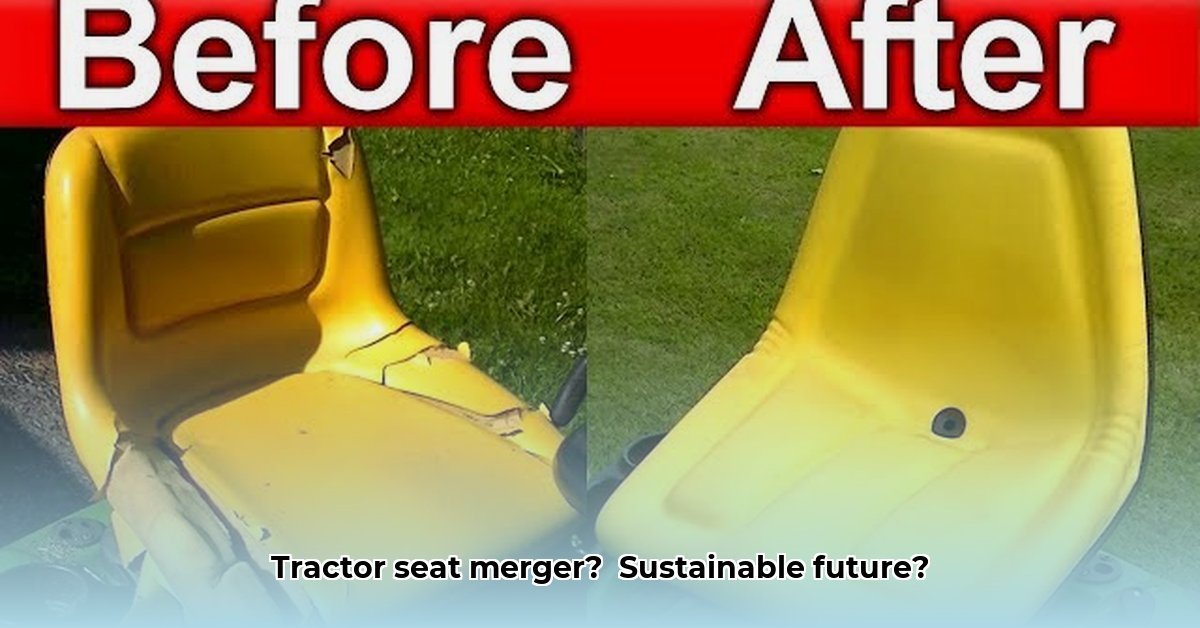
Lead: The recent merger of K&M Manufacturing and Great Northern Equipment (GNE), two major garden tractor seat manufacturers, raises significant concerns about the environmental impact of agricultural equipment. While promising increased efficiency, the lack of transparency regarding sustainability practices leaves a critical information gap, demanding immediate action from stakeholders. For more information on specific tractor seat models, check out this helpful resource: Kubota Tractor Seats.
Garden Tractor Seat Merger: A Sustainability Checkup
The K&M Manufacturing and Great Northern Equipment (GNE) merger, while potentially streamlining operations, presents a critical juncture for sustainable agriculture. While efficiency gains are anticipated, the environmental implications remain largely unclear. This lack of transparency surrounding the merged entity's sustainability practices necessitates a comprehensive investigation. This merger isn't just about comfortable seating; it's about the environmental footprint of a key component in food production.
The Sustainability Mystery
The merger's official narrative focuses on operational efficiency. However, increased efficiency doesn’t automatically equate to environmental responsibility. Crucially, information regarding the combined company's environmental impact remains scarce. Key details are missing: material sourcing, manufacturing processes, waste management practices, and transportation emissions. Without a comprehensive life cycle assessment (LCA) (a detailed analysis of a product's environmental impact from cradle to grave), assessing the true sustainability of this merger is impossible. This information vacuum hinders informed decision-making by all involved parties. Isn't it vital to understand the full picture before accepting this merger as environmentally sound?
Stakeholder Perspectives: A Call for Transparency
This merger impacts multiple stakeholders. Farmers require durable, reliable equipment, and are increasingly concerned about the environmental footprint of their purchases. Consumers are demanding more eco-conscious products. Regulators need data to ensure compliance with environmental regulations. Yet, K&M and GNE's silence on sustainability raises serious questions about their commitment to environmental responsibility. This lack of transparency undermines trust and necessitates a call for immediate action. How can we expect informed choices without complete information?
Recommendations: A Roadmap to Sustainability
To mitigate potential risks and ensure a sustainable future, the following steps are crucial:
Full Transparency: K&M and GNE must conduct and publicly release a comprehensive LCA, detailing material sourcing, manufacturing processes, transportation methods, and end-of-life management. This transparency is not optional; it's essential for responsible corporate behavior.
Sustainable Practices Implementation: The merged entity must actively adopt sustainable practices. This includes utilizing recycled materials, optimizing manufacturing processes to minimize waste, and developing effective recycling or reuse programs for old seats. A commitment to such practices should be clearly demonstrated.
Farmer Engagement: Farmers should demand transparency and actively support companies committed to sustainability. Choosing durable, repairable seats that minimize environmental impact is a powerful step toward influencing the market.
Consumer Advocacy: Consumers can exert significant influence by actively purchasing sustainable products and demanding transparency from manufacturers and retailers. This collective voice reinforces market demand for environmentally responsible practices.
Regulatory Oversight: Governments should implement clear standards and regulations for sustainable manufacturing in the agricultural equipment sector, incentivizing eco-friendly practices and penalizing irresponsible behavior. Stricter environmental regulations are essential to ensure accountability.
Risk Assessment: Potential Downfalls
Several potential risks threaten the sustainability of this merger:
| Risk Factor | Probability | Impact | Mitigation Strategies |
|---|---|---|---|
| Opaque Material Sourcing | High | High | Full disclosure of all sources in LCA; independent verification of claims. |
| Inefficient Material Use | Medium | Medium | Transition to recycled and bio-based materials; design for recyclability/repair. |
| High Transportation Emissions | Medium | Medium | Optimize logistics; shift to clean transportation fuels. |
| Unsustainable Disposal Practices | Low | Medium | Implement robust recycling programs or use biodegradable materials. |
Conclusion: A Call for Action
The K&M/GNE merger presents a critical opportunity to integrate sustainability into the agricultural equipment sector. However, without a commitment to transparency and the adoption of sustainable practices, the potential for environmental harm outweighs the benefits of increased efficiency. This requires collaborative effort: manufacturers must prioritize transparency, farmers and consumers must demand sustainability, and regulators must ensure accountability. The future of sustainable agriculture depends on it.